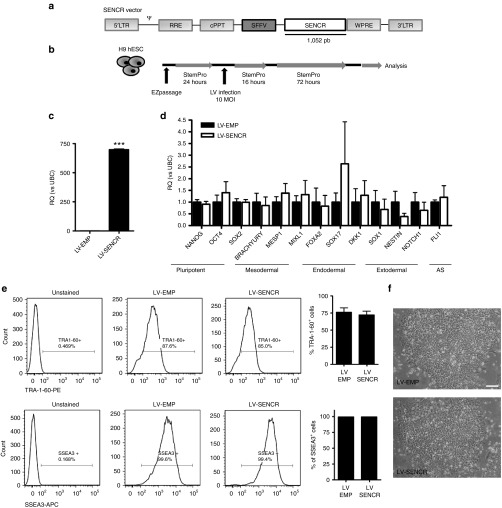Figure 4.
SENCR overexpression does not impact on human embryonic stem cells (hESC) pluripotency. (a) Schematic representation of constructed recombinant lentivirus (LV) vectors harbouring SENCR sequence under SFFV promoter. LTR, long-terminal-repeat; Ψ = Psi, packaging signal; RRE, Rev response element; cPPT, central polypurine tract; SFFV, promoter of spleen focus-forming virus; wPRE, Woodchuck hepatitis virus posttranscriptional regulatory element. (b) Experimental design used to transduce pluripotent H9 hESC. (c–f) All of measures were performed 3 days postinfection and LV-SENCR-infected group is compared to LV-control infected group. (c,d) Gene analysis for SENCR expression (c) and pluripotent/germ-layer genes (d) by quantitative reverse transcription-PCR (all error bars = RQmax). (e) Representative fluorescence-activated cells sorting and quantification of immunophenotype profile analysis for TRA-1-60 and SSEA-3 (all error bars = SEM). (f) Image representing morphology of H9 hESC colony (scale bar 125 μm). (a–f) n = 3, Student's t-test. ***P < 0.005.

